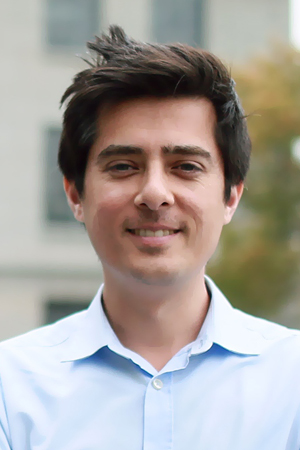Tim Byrnes
Associate Professor of Physics, NYU Shanghai; Global Network Associate Professor, Department of Physics, Faculty of Arts and Science, NYU
Email
tim.byrnes@nyu.edu
Room
E603
Tim Byrnes completed his PhD at the University of New South Wales in Sydney, Australia in the fields of condensed matter physics and high energy physics. During his PhD he worked on applications of Density Matrix Renomalization Group (DMRG), a precursor to Matrix Product States (MPS). Working in the group of Prof. Chris Hamer, he was the first to apply the technique to a high energy physics problem (the Schwinger model) and obtained highly accurate mass estimates of particle excitations. He then moved to the National Institute of Informatics in Tokyo, Japan as a postdoc in the group of Prof. Yoshihisa Yamamoto, in a joint group with Stanford University. He worked on topics related to quantum simulation, where he was the first to propose novel tasks such as solving lattice gauge theories on a quantum computer. There, he also worked on semiconductor systems such as exciton-polaritons condensates and two dimensional electron gases for applications in quantum technology. He also initiated the research on Ising machines, which are hardware solvers for combinatorial optimization problems. Since 2015, he has been based at NYU Shanghai, where he is developing various topics including cold atom spinor quantum computing (theory and experiment), quantum information topics such as multipartite discord and magic, quantum finance, and applications of exciton-polaritons.
Group website: http://nyu.timbyrnes.net
Google scholar: https://scholar.google.com/citations?user=5awMbQsAAAAJ&hl=en
Select Publications
- “Density Matrix Renormalisation Group Approach to the Massive Schwinger Model” T. Byrnes, P. Sriganesh, R. J. Bursill, C. J. Hamer Phys. Rev. D 66, 013002 (2002).
- “Simulating lattice gauge theories on a quantum computer” Tim Byrnes, Yoshihisa Yamamoto, Phys.Rev. A 73, 022328 (2006).
- “Distribution of quantum coherence in multipartite systems”, Chandrashekar Radhakrishnan, Manikandan Parthasarathy, Segar Jambulingam, Tim Byrnes. Phys. Rev. Lett. 116, 150504 (2016)
- “Remote quantum clock synchronization without synchronized clocks”, Ebubechukwu O. Ilo-Okeke, Louis Tessler, Jonathan P. Dowling and Tim Byrnes, Nature Partner Journal Quantum Information 4, 40 (2018)
- “Quantum atom optics: Theory and applications to quantum technology”, Tim Byrnes and Ebubechukwu Ilo-Okeke, Cambridge University Press (2021).
Education
- PhD, Physics
University of New South Wales
Research Interests
- Quantum information science and technology
- Condensed matter physics
- AMO (atomic, molecular, optical) physics
Courses Taught
- General Physics I
- Introduction to Quantum Computing
- Independent Study – Physics


